Acknowledgments
I would like to thank Robert Joseph Litz, Naomi Noble Richard, and Willis Barnstonethree superb writersfor their helpful comments on this manuscript.
M ICHAEL
I have benefitted greatly from the comments of my students and colleagues at Hamilton College, Michael Nylan, and Naomi Noble Richard. I am grateful to Jeni and Richard Hung for their help in Qufu.
T HOMAS
1
Kongzi, in Sima Qians Shiji and the Analects
T HE DISCIPLE HADNT SPOKEN WITH THE MASTER FOR ALMOST a decade. The last time theyd seen one another, Kongzi (Confucius) was sending Zigong  south to serve as minister at the Chu court.
south to serve as minister at the Chu court.
In the early fifth century BCE, the Central States were a chaos of civil and interstate wars. Of the more than one hundred states and city-states that once had submitted to the scion of the Zhou as overlord, a mere forty had survivedeach virtually independent and all at war or on the brink of war with their neighbors. Over the course of the previous two and a half centuries, thirty-six rulers had been assassinated and fifty-two domains brutally conquered. Alliances were formed only to be broken; renegotiated only to be violated. The courts of each state had become playgrounds for would-be traitors. As the fortunes of powerful households waxed or waned, factions moved quickly to betray actual and suspected enemies. To an aspiring statesman like Kongzi, such turbulent conditions represented both an opportunity and a nightmare.
The disciple Zigong, now in his prime, had distinguished himself as a diplomat for some ten years; the master had not. In his wanderings from state to state in search of employment, the master was frequently reduced to begging for food and shelter. Several times the master and his dwindling entourage had confronted serious danger; once hed even been clapped in jail.
It was early spring when Zigong made the long trek from Chu in the south to Kongzis home in Lu  , the state to which the master had returned after all the years on the road. The seventy-three-year-old man who finally hobbled to the door was leaning heavily on a cane. At first glance he bore little resemblance to the tall, commanding figure of Zigongs memory. If ever there was an occasion for an affectionate reunion, this was it. But instead of a warm greeting, the master scolded his disciple for having waited so long to come. Then, the master sighed.
, the state to which the master had returned after all the years on the road. The seventy-three-year-old man who finally hobbled to the door was leaning heavily on a cane. At first glance he bore little resemblance to the tall, commanding figure of Zigongs memory. If ever there was an occasion for an affectionate reunion, this was it. But instead of a warm greeting, the master scolded his disciple for having waited so long to come. Then, the master sighed.
Sima Qian, the greatest historian China has ever known and the first to write a formal biography of Kongzi around 100 BCE, resisted the impulse to explain that sigh. Sima simply invites us to interpret it. But as what? Regret at having spoken so sharply to a beloved disciple? Sorrow over his own failed career? Disappointment that at his advanced age he had no one to entrust with the management of his household? A profound acknowledgment of mortality? All of these? Whatever the sighs meaning, with his next breath Kongzi began to chant a few lines from one of his beloved Odes. As befitted a man of such erudition, the master had chosen the passage well. It richly evoked all the many emotions that crowded in:
Ah! Mount Tai is crumbling!
The pillar is falling!
The sage is passing!
The song reduced the old man to tears.
After all, Zilu  another disciple from the inner circle, had recently died, and that death could not have been far from the thoughts of either the old master or the middle-aged Zigong. Equally important, Kongzi lamented the moral chaos of their world, a world of wars that was dominated by greed, a world painfully in need of moral guidance. And then there was the masters own poor fate. Not one ruler in all the states of the Central Plain even paid lip service to his values, let alone implemented his policy proposals. Acutely aware of his failures, bowed by a lifetime of frustrated ambitions, Kongzi the eloquent had been reduced to stifled silence.
another disciple from the inner circle, had recently died, and that death could not have been far from the thoughts of either the old master or the middle-aged Zigong. Equally important, Kongzi lamented the moral chaos of their world, a world of wars that was dominated by greed, a world painfully in need of moral guidance. And then there was the masters own poor fate. Not one ruler in all the states of the Central Plain even paid lip service to his values, let alone implemented his policy proposals. Acutely aware of his failures, bowed by a lifetime of frustrated ambitions, Kongzi the eloquent had been reduced to stifled silence.
Curiously, until these closing passages of Sima Qians biography of Kongzi, when we see Kongzi near death, Simas hero appears to be a self-absorbed, unlikable, and crabbed personality. Simas portrait is carefully fashioned to suggest both the reasons for Kongzis near-continual failures in politics during his lifetime, and also his final apotheosis. As Sima Qians story has it, until he was in his mid-sixties, Kongzi was a sanctimonious and arrogant know-it-all, an adviser apt to hector rulers whom he sought to instruct and to condescend to contemporaries who came to study with him. He had to struggle to conceal his resentment against those who succeeded where he had not. Understandably, few of those in power wanted to employ him, and often those who did regretted it. Even faithful disciples occasionally bridled under his autocratic manner. Though he may have been more learned and wise than others, the masters presumption of superiority rankled. Only late in life, with his ambitions dashed, did Kongzi finally become the kind of man Sima Qian could portray as a sage: a man whose eagerness to learn exceeded his eagerness to teach.
In order to achieve the maximum impact from the narrative that he, the Imperial Archivist, had composed, Sima Qian, the greatest storyteller ever to write in Chinese, chose to relate a flat tale of Kongzis youth and middle age, wagering that the biographys dramatic conclusion would incite more empathy for his subject if the beginning and middle of the account seemed utterly unremarkable. When completing the Records in which the biography of Kongzi appears, Sima Qian did not need to tell readers that Kongzi had been pronounced the uncrowned [or shadow] king of the ruling Han dynasty, then in power for slightly over a century.
Kongzi was portrayed by many as the patron saint whose precepts ostensibly ordered the empire. Temples had been erected in Kongzis honor and sacrifices offered, so that the master had become popularly a demigod with an unblemished reputation for integrity, embodying the ideals of supreme civilization. Some even thought him a manifestation of the astral Black God, briefly come down to earth to establish a new ideal dispensation through the Han house. The old texts and oral traditions associated with his teachings had been elevated to secure canonical status. As an exemplary teacher, Kongzi became, in writing and public speeches, an acknowledged authority to be reckoned with by all politicians, thinkers, and persuaders, regardless of their ethical orientations. As everyone knew, the four centuries after Kongzis death in 479 BCE witnessed his gradual coronation along with the construction of an extensive genealogy fabricated by interested members of the Kong family. What Sima Qian hoped to convey were the reasons behind the mingled devotion and antipathy that Kongzis name continued to inspire four centuries after his death.


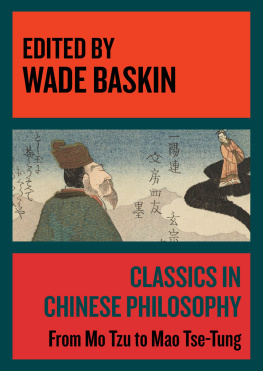
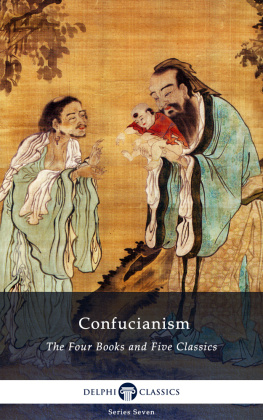


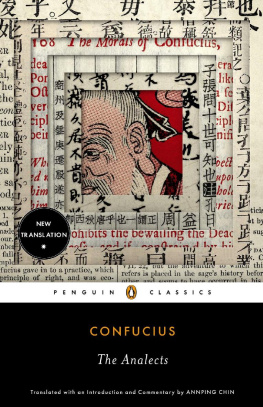
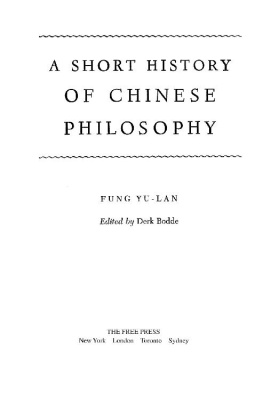
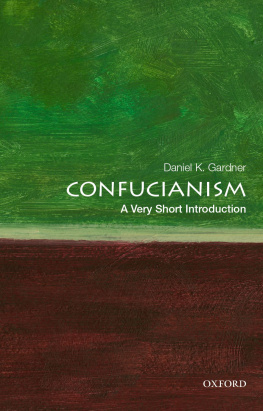
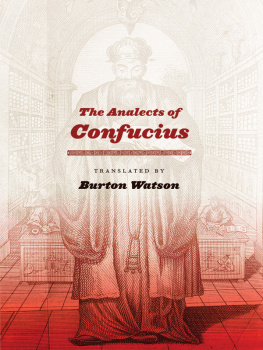



 south to serve as minister at the Chu court.
south to serve as minister at the Chu court. , the state to which the master had returned after all the years on the road. The seventy-three-year-old man who finally hobbled to the door was leaning heavily on a cane. At first glance he bore little resemblance to the tall, commanding figure of Zigongs memory. If ever there was an occasion for an affectionate reunion, this was it. But instead of a warm greeting, the master scolded his disciple for having waited so long to come. Then, the master sighed.
, the state to which the master had returned after all the years on the road. The seventy-three-year-old man who finally hobbled to the door was leaning heavily on a cane. At first glance he bore little resemblance to the tall, commanding figure of Zigongs memory. If ever there was an occasion for an affectionate reunion, this was it. But instead of a warm greeting, the master scolded his disciple for having waited so long to come. Then, the master sighed. another disciple from the inner circle, had recently died, and that death could not have been far from the thoughts of either the old master or the middle-aged Zigong. Equally important, Kongzi lamented the moral chaos of their world, a world of wars that was dominated by greed, a world painfully in need of moral guidance. And then there was the masters own poor fate. Not one ruler in all the states of the Central Plain even paid lip service to his values, let alone implemented his policy proposals. Acutely aware of his failures, bowed by a lifetime of frustrated ambitions, Kongzi the eloquent had been reduced to stifled silence.
another disciple from the inner circle, had recently died, and that death could not have been far from the thoughts of either the old master or the middle-aged Zigong. Equally important, Kongzi lamented the moral chaos of their world, a world of wars that was dominated by greed, a world painfully in need of moral guidance. And then there was the masters own poor fate. Not one ruler in all the states of the Central Plain even paid lip service to his values, let alone implemented his policy proposals. Acutely aware of his failures, bowed by a lifetime of frustrated ambitions, Kongzi the eloquent had been reduced to stifled silence.